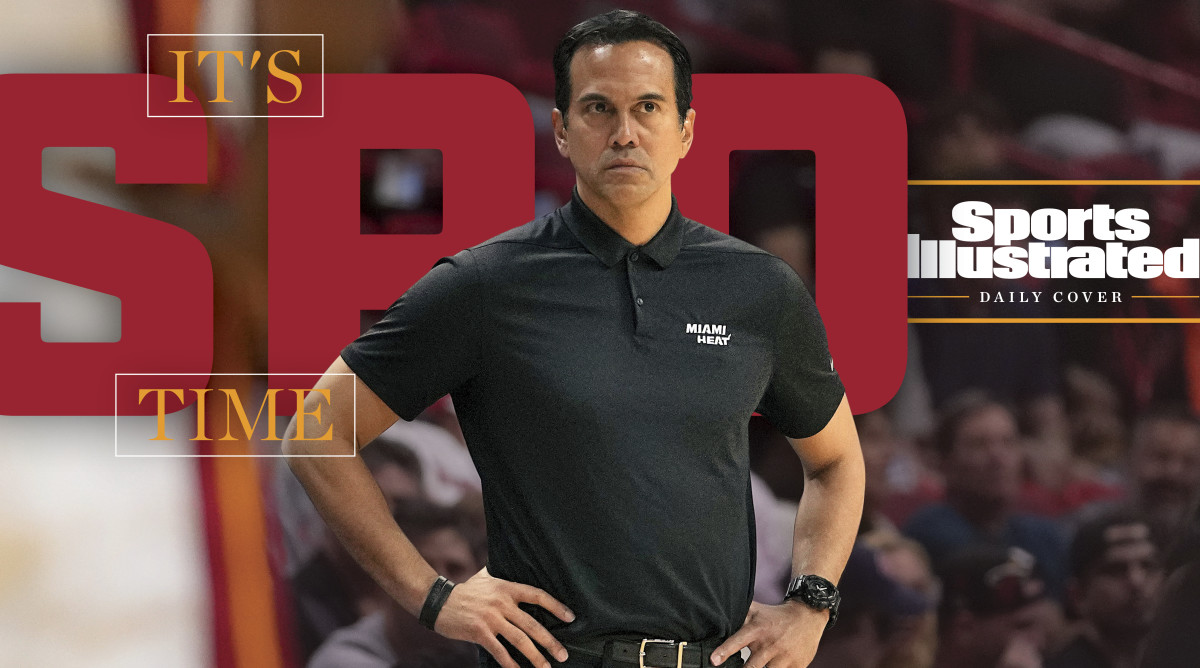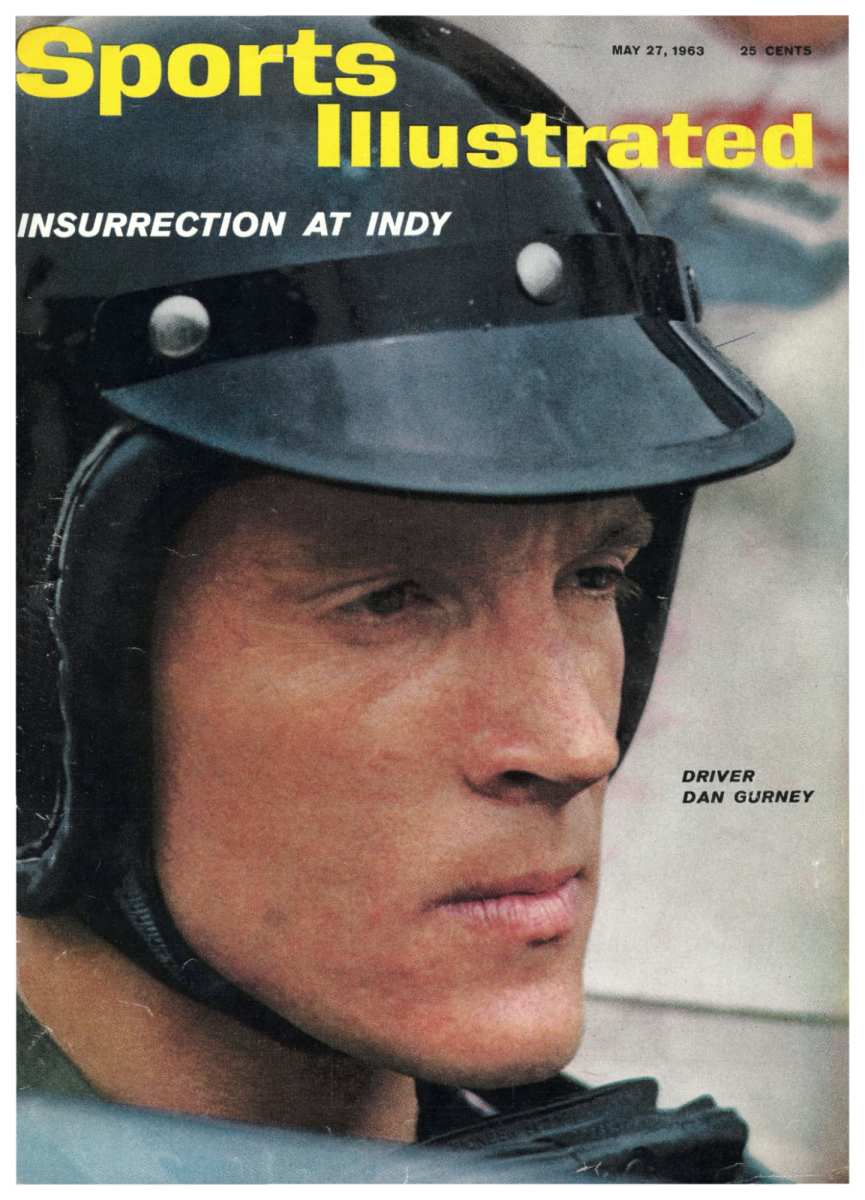SI:AM | The European Soccer Season Has a Fitting Finale
Good morning, I’m Dan Gartland. I’m very, very ready for the long weekend (and the big soccer match tomorrow).
In today’s SI:AM:
🏆 Champions League final preview
🏀 What makes Erik Spoelstra great
🏎️ SI Vault: Indy 500 throwback
Programming note: We’re off for Memorial Day and will be back in your inbox on Tuesday, May 31. Enjoy the holiday weekend.
If you're reading this on SI.com, you can sign up to get this free newsletter in your inbox each weekday at SI.com/newsletters.
🎵“THE CHAMPIONS”
The UEFA men’s Champions League final is one of the few soccer games I will watch in its entirety in non–World Cup years, but it’s a good one to pick. The game always pits two of Europe’s biggest clubs against each other, with enormous stakes boiled down to a single game (a rarity in the club game). Plus, you have to love that it takes place in the middle of the afternoon on the East Coast during a holiday weekend.
This year’s final again features two of Europe’s bluebloods, with Liverpool facing Real Madrid tomorrow at 3 p.m. ET on CBS. Both clubs will be looking to add to a crowded trophy case. Real won the La Liga championship this year and captured the Supercopa de España in January. Liverpool locked up two domestic titles as well: the FA Cup and League Cup.
As recently as a few weeks ago, when the Reds won their semifinal tie over Villarreal, the club was chasing something historic: the first quadruple for an English club, combining their cup wins in England with potential Premier League and Champions League crowns.
But after Man City clinched the league with a dramatic win on the final day of the season, a Liverpool loss in Saint-Denis, France, tomorrow would actually turn this promising campaign into a major disappointment. Jonathan Wilson writes that, “were Liverpool to lose on Saturday, a pair of domestic cups would feel like scant reward for such an exceptional season.”
And on the other side, here’s what Wilson had to say about what’s at stake for Los Blancos.
“For Madrid, the issue is less clearly defined. If it wins, it will have added a 14th European title to its 35th domestic league title which, given the sense of transition it has existed under for a couple of years now, would represent a remarkable season. But if it were to lose against an opponent it also happened to beat in the 2018 final, then the picture, abruptly, looks rather less rosy.”
That 2018 was notable because Liverpool star Mohamed Salah was forced off with a dislocated shoulder after a rough play by Sergio Ramos. Ramos may be gone now (he left for Paris Saint-Germain last summer), but Salah is eager for revenge four years later.
That Madrid is even in this game is a minor miracle. Riyad Mahrez’s goal for Manchester City in the 73rd minute of the second leg of their semifinal tie appeared to set up a second straight all-England final and third in four years, but Madrid scored in the 90th minute and again in the first minute of stoppage time to send the game to extra time, at which point Karim Benzema converted a penalty that sent Madrid through. For as talented a team as Madrid is, it has plenty of flaws, Wilson writes:
“On a systemic level, Madrid has been second-best in each match. It has lost the broader game of strategy but won the battles. In the longer term, that feels unsustainable. You can’t keep relying on Luka Modrić to produce a pass of the mesmerizing brilliance that brought the equalizer against Chelsea. You can’t assume that Karim Benzema will always gobble up every half-chance. And you can’t expect Thibaut Courtois to save everything once the surge has begun.”
Liverpool is favored in the game and has gotten good news in recent days about two key players who had been dealing with injuries, Virgil van Dijk and Thiago Alcântara, so we’ll be seeing two teams at full strength. It will be up to the sides’ accomplished managers (Liverpool’s Jürgen Klopp and Madrid’s Carlo Ancelotti) to pull the right strings that will give their team the advantage.
And because this is the final match of the season, it’s only natural to look to the future and the always chaotic transfer market. Clubs as big as these are always looking to reload but Real was dealt a serious blow this week when PSG star Kylian Mbappé spurned the club and announced his intention to remain in Paris. For Liverpool, the question is whether it will be able to hang onto its two biggest offensive weapons, Salah and Sadio Mané. Both players have just one more year on their contracts and neither has committed to the club long-term by signing a new deal. Further transfer speculation can wait until Sunday, though.
The best of Sports Illustrated

The Heat are on the brink of elimination, but they have the benefit of being led by Erik Spoelstra, one of the league’s most resilient coaches, Michael Pina writes in today’s Daily Cover:
“Still, despite being overmatched in several ways, the Heat can’t ever be dismissed because they’ve assumed their coach’s plucky resolve. ‘That’s one thing that really stands out with him,’ Boston coach Ime Udoka said before Game 1. ‘A guy that has learned on the fly, but also keeps you off balance, keeps you guessing and has kind of adapted throughout the years to where he’s at now.’”
Klay Thompson had a long-awaited heroic night for the Warriors as they knocked out the Mavs, Rohan Nadkarni writes. … Before Game 5, Chris Mannix and Howard Beck discussed how the Mavericks can take the next step in building around Luka Dončić. … With College Football Playoff expansion looming, Richard Johnson writes that it should adopt a Champions League model.
Around the sports world
The Yankees and Rays coordinated to provide facts about gun violence on Twitter in lieu of updates on last night’s game. … Zion Williamson has been cleared to resume playing without restrictions. … Zlatan Ibrahimović says he played without an ACL for six months (oh, and he’s 40 years old). … The lowly Reds, who had scored 21 runs in their previous seven games, beat the Cubs 20–5 yesterday. … Chicago brought in shortstop Andrelton Simmons to pitch at the end of that game and he got Kyle Farmer to swing and miss at a 44 mph pitch. … Michelle Wie West is retiring from the LPGA Tour.
The top five...
… things I saw yesterday:
5. The outfit MLB veteran Sean Doolittle wore for his debut with the A’s in 2012
4. Miguel Cabrera’s celebration after his walk-off hit
3. Shohei Ohtani goofing around with Raimel Tapia
2. The drama after the Flames’ go-ahead goal was waved off due to a distinct kicking motion
1. Connor McDavid’s game-winning goal in overtime to win the series for the Oilers
SIQ
Of the teams competing in the NCAA men’s lacrosse Final Four this weekend, which program has the most national championships?
- Maryland
- Cornell
- Rutgers
- Princeton
Yesterday’s SIQ: Which club won the first Champions League final in 1993?
Answer: Olympique de Marseille, which beat AC Milan 1–0 in Munich to become the only French club to win the men’s Champions League. But Marseille’s win was clouded by controversy.
Before the final was to be played, Marseille first had business to take care of in the domestic league. It was jockeying with Paris Saint-Germain for the championship on the final day of the season, needing to beat lowly Valenciennes to ensure its place atop the table. Valenciennes, meanwhile, was fighting to avoid relegation.
But with the Champions League final scheduled less than a week after the domestic league finale, Marseille president Bernard Tapie wanted his players fresh and concocted a scheme to win the league without forcing his players to exert themselves against Valenciennes.
Tapie ordered Marseille player Jean-Jacques Eydelie to contact two Valenciennes whom he had previously played with for Nantes and offer them cash in exchange for throwing the game. The day before the game, Eydelie handed an envelope full of cash to one of the players’ wives. A package containing 250,000 francs was discovered buried in a garden after police began to investigate the matter.
Marseille won that game 1–0, securing the league championship and dooming Valenciennes to relegation. The scandal unfolded quickly, though, with a criminal investigation launched on June 8, 1993. Eydelie was handed a one-year suspended jail sentence and banned from French soccer for 18 months. Tapie was sentenced to two years in jail and served six months. Two other Marseille players were handed six-month suspended sentences. Marseille vacated its ’92–93 title and was relegated to the second tier for the following season. It got to keep its Champions League title, though, because there was no evidence of wrongdoing during the European competition but was not allowed to defend the title in ’93–94.
From the Vault: May 27, 1963

While all the drivers at Sunday’s 106th running of the Indy 500 will be behind the wheel of nearly identical cars, that wasn’t the case at the 1963 edition of the race.
In the early ’60s, the sport was in the midst of a revolution. Until 1961, everyone drove cars with the engine mounted in the front of the car. But in ’61, British designer John Cooper entered a rear-engine car into the United States’ biggest open-wheel race. Not only was the engine in a different location, it was also only two-thirds the size of its American counterparts—and the car was just as fast. It was the first non-American car to qualify for the 500 in nine years and its unorthodox design led SI’s Kenneth Rudeen to ask in the leadup to the race, “Is the time-honored Indianapolis roadster still master of the Brickyard, or is it merely an expensive fossil soon to be pulverized by intruders from overseas?”
The Cooper car, driven by Australia’s Jack Brabham, finished ninth, sparking increased interest in the rear-mounted engine design. American designer Mickey Thompson entered a rear-engine car in the 500 in 1962, driven by Dan Gurney, but it broke down after 92 of the 200 laps. That didn’t deter additional rear-mounted entries in the ’63 race, though.
Two were made by British manufacturer Lotus with Ford engines (Gurney, who had ditched Thompson, drove one, while Scotland’s Jimmy Clark drove the other). Thompson entered five Chevrolet-powered rear-engine cars. Two others, sponsored by Jim Kimberly, were powered by Buick engines. Cooper’s 1961 design was also entered, sporting a new Aston Martin engine.
Writing in SI before the 1963 race, Rudeen framed the influx of nontraditional vehicles as an assault:
“For a decade the 500-mile race at Indianapolis has been run behind brick walls of orthodoxy. Each year there have been assaults on the fortress, some by single commandos and others by small but brave companies. None has succeeded. But now Grand Prix drivers in rear-engined racers are attacking in force. They have lively expectations of knocking down the bricks from the inside, and with them, everything that has recently been held sacred in the great Hoosier fiesta of speed.”
The Lotus-Ford models driven by Gurney and Clark proved to be the only real threats to tradition that year. None of the other rear-engine cars could hold a candle to the Lotus 29, with Gurney finishing seventh and Clark second. The winner was Parnelli Jones, driving a traditional front-engine car. (His victory was not without controversy. After another driver accused Jones of causing a crash by leaking oil out of his car, Jones punched the guy in the mouth at a luncheon the next day.)
Jones’s win did little to halt the revolution, though. By the end of the decade, rear-engine cars outnumbered the traditional Indy roadsters. On Sunday, all the cars will have their engines mounted in the rear.
Check out more of SI’s archives and historic images at vault.si.com.
Sports Illustrated may receive compensation for some links to products and services on this website.
